
Helpful_Hints_for_IELTS
.pdf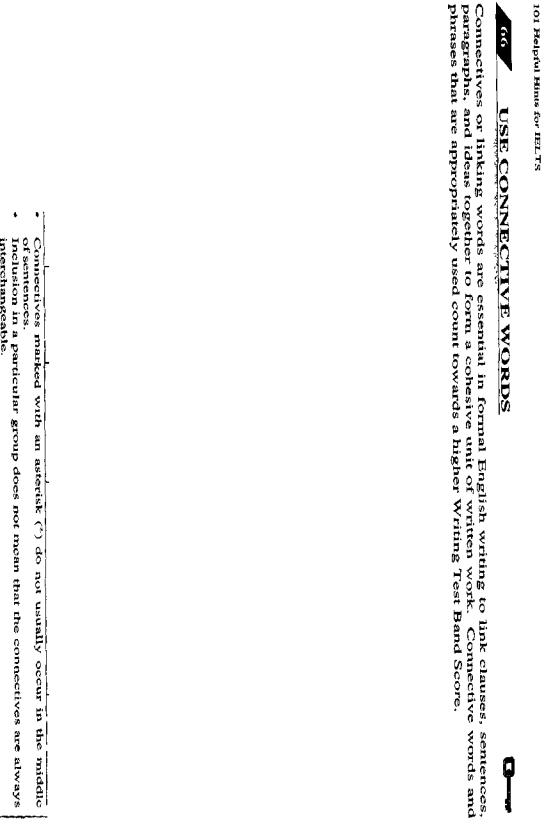
TABLEOFSOMEOFTHEMOSTCOMMONLYUSEDCONNECTIVEWORDSANDPHRASES
|
(Refer to an academic writing textbook orteacherfora detailed discussion ofappropriate use. |
See the FurtherReadingList on page 171,) |
|
|
|||||||||
|
|
|
|
|
|
|
|
|
|
|
|||
Firstofall,... |
|
Inthefirstplace,.,. |
Group1,Sequencing/Listing |
Inotherwords, . |
Group7.Inferring |
|
|||||||
Tobegin with,... |
|
|
|
|
|
|
|||||||
|
|
|
|
|
Use tocatalogue (make a list |
Inthatcase, . |
|
Use to deducefrom whatyou |
|||||
Firstly,,Second(ly),...Third{ly) |
|
||||||||||||
ofitems or sequence (place |
Then |
|
lave said. |
|
|
||||||||
First,.,, |
Next, |
.Then. |
- Afterthat,... |
|
|
|
|||||||
in order) whatyou say. |
|
|
(Either what mightormight |
||||||||||
Finally,.., |
|
|
|
|
|
|
|
(Or) else,... |
|
not have happened, |
|
||
Also,.. |
|
|
|
|
|
|
Group2,Reinforcing |
Otherwise,.,, |
is happening, orwillhappen.) |
||||
|
|
|
|
|
|
|
|
|
|||||
|
|
|
|
|
|
|
|
Useto addto andstrengthen |
|
|
|
||
Besides,,.. |
|
|
|
|
|
|
|
|
|
|
|
||
|
|
|
|
|
|
|
|
|
|
|
|||
Furthermore,... |
|
|
|
|
|
what you have said. |
Alternatively,., |
Group8.GivingAlternatives |
|||||
|
|
|
|
|
|
||||||||
Inaddition,... |
|
|
|
|
|
|
Ontheottohand,.,, |
Use to referto an alternative |
|||||
|
|
|
|
|
|
||||||||
|
|
|
|
|
|
Thenagain, . |
to whatyou have said, |
|
|||||
Moreover,... |
|
|
|
|
|
|
|
|
|
||||
|
|
|
|
|
|
|
|
|
|
|
|||
|
|
|
|
|
|
|
|
|
|||||
Inthesaneway,.., |
|
|
|
|
Group3.Equating |
: Inotherwords,.,. |
Group9.Restating |
|
|||||
Likewise,.., |
|
|
|
|
|
Usetoindicate similarity |
Thatistosay.,,, |
Usetoexpress whatyouhave |
|||||
Similarly,,., |
|
|
|
|
|
|
with whathasbeen said. |
Toputitsimply,,,, |
saidinanotherway (usually |
||||
|
|
|
|
|
|
|
moresimply.) |
|
|
||||
|
|
|
|
|
|
|
|
|
|
|
|
|
|
|
|
|
|
|
|
|
|
||||||
In conclusion,,.»* |
|
|
|
|
Group4Summarising |
Conversely,,. |
Group10.Contrasting |
||||||
Insummary,...* |
|
|
|
|
|
Use to introduce a gen- |
Incompatis |
a,... |
Use to compare orcontrast |
||||
To |
conclude,...* |
|
|
|
|
|
eralisation ofor conclusion |
In contrast tothis,,,, |
withwhatyouhavesaid. |
||||
|
|
|
|
|
to whatyou have said, |
|
|
|
|||||
|
|
|
|
|
|
|
|
|
|
||||
|
|
|
|
|
|
|
|
Instead,.,, |
|
|
|
|
|
To sum up,.,.* |
|
|
|
|
|
|
|
|
|
|
|||
|
|
|
|
|
|
|
|
|
|
|
|||
|
|
|
|
|
|
|
|
|
|
|
|
||
For |
example,... |
|
|
|
|
|
Group5. Referring |
Onthecontrary..,, |
|
|
|
||
For |
instance,,., |
|
|
|
|
|
(e.g.)Useto indicate you will |
,„, whereas,.. |
|
|
|
||
|
|
|
|
|
|
|
|
give (orhavegiven) one or |
|
|
|
||
Inparticular,,, |
|
|
|
|
|
.,,,while.,./..,,whilst. |
|
|
|
||||
|
|
|
|
|
more examples ofwhatyou |
|
|
|
|||||
particularly,,,. |
|
|
|
|
|
|
|
|
|||||
|
|
|
|
|
have said. |
|
|
|
|
|
|||
|
|
|
|
|
After all |
Group11.Conceding |
|||||||
. such as,., |
|
|
|
|
|
|
|
||||||
|
|
|
|
|
|
(i.e.) Usetoindicate an |
Allthesame.... |
Use toindicate otherways |
|||||
|
|
|
|
|
|
|
|
||||||
. . . t h a t .. ,/ . „,thatistosay,,. |
|
|
|
explanationofwhatyou have |
Although,,.Though,,.,Everthough.. |
ofconsidering what you |
|||||||
|
|
|
said. |
have said. |
|
|
|||||||
.,„namely,,,, |
|
|
|
|
|
Even if, |
|
|
|
|
|||
|
|
|
|
|
|
|
|
|
|
||||
|
|
|
|
|
|
|
|
|
|
|
|
||
Asaresult,,,. |
|
|
|
|
|
Group6,ShowingResults |
|
|
Key: |
|
|||
|
|
|
|
|
|
|
|
|
|
|
|||
Consequently,,,. |
|
|
|
|
|
Use to express the |
Inspiteof,.,,despitethisthat,. |
BasicConnectives |
|||||
|
|
|
|
|
|
|
|
consequence ofwhatyou |
|
|
|||
Hence,,.. |
|
|
|
|
|
|
Nvertheless.... |
,..ofthe |
"and" |
type |
|||
|
|
|
|
|
|
have said. |
|||||||
|
|
|
|
|
|
|
|
Nonetheless,.,. |
|||||
So... |
|
|
|
|
|
|
|
|
|
||||
|
|
|
|
|
|
|
,.ofthe |
"or" |
type |
||||
|
|
|
|
|
|
|
|
|
Still,. |
|
|||
Therefore,,„ |
|
|
|
|
|
|
|
|
...ofthe |
"but" |
type |
||
|
|
|
|
|
|
|
|
||||||
|
|
|
|
|
|
|
Yet,.,, |
|
|||||
Thus,,.. |
|
|
|
|
|
|
|
|
|
|
|
||

Writing Test Hints
WRITING TASK 1
UNDERSTAND WRITING TASK 1
Writing Task 1 is designed to test your ability to interpret and present information that is given in short form, often as data within a diagram, graph, chart or table. You must presentthe information in your own words as complete sentences within paragraphs, that is, not in note form unless specifically requested. The minimum number of words you are required to write is 150. You are not asked to give opinions, make assumptions, or draw conclusions about the information given.
The information may be presented to you in a number of ways, for instance, as:
• |
a graph |
• |
a diagram of the stages of a process or procedure |
• |
a bar or pie chart |
• |
a sequence of events |
• |
a table of information |
• |
a picture of an object showing how it works. |
There might be a combination of graphs, tables and charts, and you may be asked to compare the information given. Sometimes, however, even when the question does not specifically ask you to compare information, you will probably find it is necessary to do so (as in Task 1 of Writing Test One). Remember to compare the information shown, if it helps you with your description. (See also Writing Hints 66 and 82.)
Alternatively, you may be asked to use the information given to support a written statement.
First of all, you must fully understand the task and what you are asked to do. Spend a minute or two working out what it is you are looking at, and what information you must give.
PLAN THE NUMBER OF PARAGRAPHS
Once you have read the task carefully and you are sure of what to do, you need to plan your answer. Since you have only 20 minutes to complete the task, you do not have time to write a detailed plan on paper. Instead, you should look for the main features of the diagram, table, chart, process etc. This will assist you to determine the number of paragraphs to write before you begin.
• Look at the model answer for Task 1 of Writing Test One on page 164.
To begin with, you will need an introductory paragraph describing the table. Then you should note that the information is presented in columns and rows. You could either write 3 body paragraphs according to the column information (NonBook Club Members, Book Club Members, and Total), or 4 body paragraphs according to the row information (Fiction, NonFiction, Magazines, and Total). It does not matter which of the plans you choose, but you must make a decision before you begin to write. Note that you do not need a "separate" conclusion for Writing Task 1. (See Writing Hint 74.)
You should also decide what the main topic of each paragraph will be before you write. In general, you should aim to write a total of between 3 and 5 paragraphs for Writing Task 1.
The model answer for Task 1 of Writing Test One is written in 4 paragraphs:
Paragraph 1 - the introduction
Paragraph 2 - the sales to nonBook Club members
Paragraph 3 - the sales to Book Club members
Paragraph 4 - the totals.
55
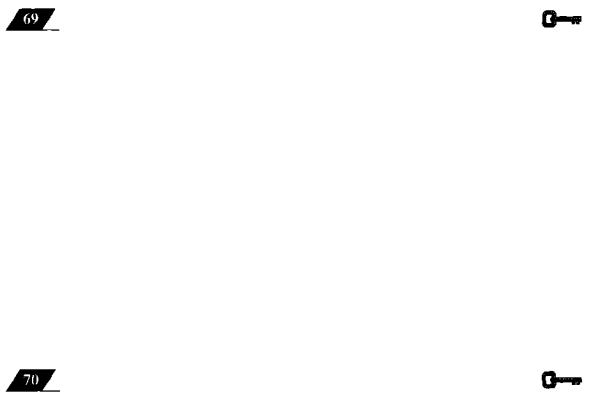
101 Helpful Hints for ELTS
Sometimes, it is a good idea to join together the introduction and the first body paragraph, but only in Writing Task 1. If there is quite a lot of information to include in your answer, you might not be able to complete the task in 20 minutes if you write a long introduction. However, an introduction that is too short, for instance, a single short sentence, will not work as a paragraph. Similarly, you might need to join paragraphs that contain more than one main idea, but only do this in Writing Task 1.
a Look at Task 1 of Writing Test Two on page 123.
You must write a report describing the stages involved in writing a formal academic essay as illustrated in the diagram. You need an introduction, and, as six stages are shown, it would be logical to plan for 7 paragraphs. This would normally be the best approach. However, since Writing Task 1 is short, each paragraph would then contain too few words. Note how the model answer combines some ofthe stages ofthe process within its 4 paragraphs to avoid this problem.
Also, you do not need to add a "separate" conclusion in Writing Task 1. (See Writing Hint 74.)
Plan the number of paragraphs before you begin, by noting the main features of the data within the diagram, graph, chart etc.
USE "REFERENCE" STRUCTURES
When referring to a diagram, chart, table etc. use "reference" structures such as those given below. This will assist the reader to know where your information comes from, and will effectively lead in to what you have to say.
|
table/chart |
shows (that)... |
According to the |
|
table/chart, |
|
|||
|
|
diagram, |
|
||||||
|
diagram |
|
|
As (is) shown in the |
|
||||
|
|
|
graph, |
|
|||||
|
graph |
|
|
As can be seen from the |
|
||||
|
|
|
figures, |
|
|||||
|
|
|
|
|
|
|
|
|
|
|
|
|
|
|
|
||||
The |
figures |
show (that)... |
It can be seen from the |
table/chart |
|
||||
statistics |
|
|
We can see from the |
diagram |
|
||||
|
|
|
|
||||||
|
|
|
|
|
|||||
|
diagram |
shows |
how... |
It is |
clear |
|
from the |
graph |
(that)... |
|
|
figures |
|||||||
|
|
describes |
|
|
apparent |
|
|
|
|
|
|
|
|
|
|
|
|
||
|
|
illustrates |
|
|
|
|
|
|
|
|
|
|
|
|
|
|
|
|
|
Be careful not to use these "reference" structures too frequently to avoid unnecessary repetition.
WRITE A DESCRIPTIVE INTRODUCTION
All Writing Task 1 answers require an introduction, which should begin with a topic sentence. The topic sentence ofthe introduction is a general statement that explains whatit is that is being described in the task. Imagine that the reader does not have the task in front of him or her. You must tell the reader in words what you see. (See also Writing Hint 61.)
OLook at the introduction to the model answer for Task 1 of Writing Test One:
The table shows the sales figures of fiction books, non-fiction books, and magazines in a college bookshop for February 2000. The figures are divided into two groups: sales to non~ Book Club members and to Book Club members.
The general statement (topic sentence) of the introduction is shown in bold print. It tells the
56

Writing Test Hints
reader that the information is given in a table, and that the table shows sales figures. In addition, it states what those figures are for (fiction books, non-fiction books, and magazines), and for whom and when the figures apply. This sentence is informative, and gives a clear indication of what the reader needs to know to understand the rest of your written work. Note also that it includes the answer to at least 3 wh/how type questions. (See Writing Hint 62.)
The next sentence describes how groups of information are given in the table or, rather, how the writer has decided to group the information, and gives an idea of how the body of the piece of writing is constructed. The effect is similar to a "map", which provides the reader with a sense ofdirection. The reader knows that the next paragraph will describe the sales figures to nonBook Club members, and the paragraph after that will describe the sales to Book Club members.
One problem is that a suitable general statement may already be given as part of the question. In that case do not copy the sentence word for word. Instead, you should either rearrange the words to say what has been said in a slightly different way, and/or give additional information:
•Look at part of the question for Task 1 of Writing Test One:
The table below summarises some data collected by a college bookshop for the month of February, 2000.
It would be a mistake to copy this part of the question to use as the general statement in the introduction. In the model answer, you can see that the question words have been changed, added to, and rearranged in order to write a general statement. Alternatively, because a general statement is already part of the question task, you might simply begin with the "map" of your answer, that is, with a sentence describing how the information is given in the table.
Begin the introduction with a general statement, then a "map" ofthe body ofthe answer
PRESENT STATISTICS EFFECTIVELY
If you are asked to organise and present data in your answer, you will need to include the given statistics in an effective manner. You may also be asked to compare statistical data.
O Look at the data in the model answers for Task 1 of Writing Tests One, Three and Four:
TEST College staff bought 332 magazines, 44 fiction and 29 non-fiction books.
Book Club members bought more fiction (76) and non-fiction books (942) than other customers.
The total number of publications sold for the month was 3134 (1474 to college students, 405 to staff, 204 to the public, and 1051 to Book Club members).
TEST France and Spain both have 12 students; Germany has 11.
TMRFF
Students from all five countries are enrolled in CAD, but more males are taking this option than females (21 and 9 respectively).
For each nationality the males taking CAD outnumber the females except in the case of the Syrians with 3 females to only 1 male.
TEST (Acme Sports Cars) was making almost twice the profit at the beginning than at the end FOUR of the financial year.
There was a three-fold increase in (Branson Motors') monthly profit over the same period. Branson Motors' monthly profit, however, doubled from £20,000 to £40,000.
(The monthly profit)... continued to rise, peaking atjust over£60,000 by the end ofSeptember. Branson Motors' monthly profits fluctuated between just over £60,000 and £40,000.
57
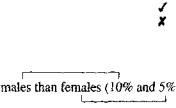
101 Helpful Hints for IELTS
As you can see, the statistical data can be presented in a variety of ways: |
|
|||||||||||||||||||
|
... as numbers functioning as adjectives inside or outside brackets |
|
||||||||||||||||||
|
... as numbers expressed in word form {"twice the profit", |
"three-fold" etc.) |
||||||||||||||||||
|
... as numbers listed in the order mentioned using the word |
"respectively". |
||||||||||||||||||
|
Statistics are often expressed in percentages: |
|
|
|
|
|
|
|
||||||||||||
|
|
|
|
|
|
|
|
|
|
|
|
|
|
|
|
|
|
|
||
|
The EEC and the USA both had 10%. |
|
|
|
The profit remained steady at 10%. |
|||||||||||||||
|
|
|
|
|
|
|
|
|
|
|
|
|
|
|
|
|
|
|
||
|
|
|
|
|
|
|
|
|
|
|
|
|
|
|
|
|
|
|
||
|
The profit rose to 10%. |
|
|
|
|
|
|
|
The profit peaked at just over 10%. |
|||||||||||
|
|
|
|
|
|
|
|
|
|
|
|
|
|
|
|
|
|
|
|
|
|
The monthly profit |
|
increased |
|
|
by lO% |
|
from 10% to 20%. |
|
|||||||||||
|
|
|
|
|
|
|
|
|
|
|
||||||||||
|
|
|
|
|
|
fell |
|
|
|
|
|
|
|
|
from 20% to 10%. |
|
||||
|
|
|
|
|
|
|
|
|
|
|
|
|
|
|
|
|
|
|
|
|
|
|
|
|
|
|
|
|
|
|
|
|
|
|
|
|
|
|
|
|
|
|
|
|
|
|
|
|
|
|
|
|
|
|
|
|
|
|
|
|
|
|
|
|
|
|
|
the largest |
|
|
|
|
|
percentage |
|
|
|
of students |
(10%). |
||||
|
Slovakia had |
|
|
|
|
|
|
|
number |
|
|
|
(245). |
|||||||
|
|
|
|
|
|
|
|
|
|
|
|
|
|
|
|
|||||
|
|
|
|
|
10% |
|
|
|
|
|
|
|
|
|
|
|
of the students. |
|||
|
|
|
|
|
|
|
|
|
|
|
|
|
|
|
|
|
||||
|
10% of the students were from the Federation of Russia. |
|
|
|
||||||||||||||||
|
France accountedfor. 10% of the students. |
|
|
|
|
|
|
|
||||||||||||
|
|
|
|
|
|
|
|
|
|
|
|
|||||||||
|
|
|
|
|
|
|
|
|
|
|
|
|||||||||
|
They made |
|
the |
|
profit percentage |
in May than in March. |
||||||||||||||
|
twice |
|||||||||||||||||||
|
|
|
three times |
|
|
|
|
|
percentage |
of profit |
|
|
|
|||||||
|
|
|
four times |
|
|
|
|
|
|
|
|
|||||||||
|
|
|
|
|
|
|
|
|
|
|
|
|
|
|
|
|
||||
|
|
|
|
|
|
|
|
|
|
|
|
|
|
|||||||
|
|
|
|
|
|
|
|
|
|
|
|
|
||||||||
|
The |
profit percentage |
|
|
doubled |
|
|
|
|
from March to May. |
||||||||||
|
|
|
|
|
|
|
|
|
|
|
|
|
||||||||
|
|
percentage |
of profit |
|
|
increased |
|
three-fold |
|
|
|
|||||||||
|
|
|
|
|
|
|
|
|
decreased |
|
four-fold |
|
|
|
||||||
|
|
|
|
|
|
|
|
|||||||||||||
|
Company A's profit percentage rose steadily, whereas thaLof Company B fell slightly. |
|||||||||||||||||||
|
|
|
|
|
|
|
|
|
|
|
|
|
|
|||||||
|
|
|
|
|
|
|
|
|
|
|
|
|
|
|
||||||
|
There were more |
|
|
|
|
|
|
|
|
|
|
respectively). |
|
|||||||
|
|
|
|
|
|
|
|
|
|
|
|
|
|
|
|
|
|
|
|
|
Note also the following structures for presenting numbers and statistical data:
|
|
almost |
|
|
a |
quarter of |
|
|
|
|
|
||
|
|
|
|
one |
|
|
|
|
|
|
|
||
|
|
nearly |
|
|
a |
third of |
|
|
|
|
|
||
|
|
approximately |
|
|
|
|
|
|
|
||||
|
|
|
|
one |
|
|
the (total) number of students. |
||||||
|
|
about |
|
|
(a) |
half of |
|
|
|
|
|
||
|
|
just over |
|
|
|
|
|
|
|
||||
|
|
|
|
one |
|
|
|
|
|
|
|
||
School A has |
over |
|
|
three |
quarters of |
|
|
|
|
|
|||
|
|
|
|
|
|
|
|
|
|||||
|
|
|
|
|
|
|
|
|
|
|
|||
|
|
|
|
|
|
|
|
|
|
|
|
|
|
|
|
|
|
|
|
|
|
|
|
|
|
|
|
|
|
|
|
|
|
|
|
|
|
|
|
|
|
|
|
almost |
|
|
a quarter |
|
|
|
|
|
|||
|
|
nearly |
|
|
half |
|
|
as many students |
|
|
|
||
|
|
approximately |
|
|
three quarters |
|
|
as School B. |
|||||
|
|
about |
|
|
|
|
|
as much space |
|
|
|
||
|
|
just over |
|
|
twice |
|
|
|
|
|
|||
|
|
over |
|
|
three times |
|
|
|
|
|
|||
|
|
|
|
|
|
|
|
|
|
|
|
|
|
|
|
|
|
|
|
|
|
|
|
||||
|
almost / nearly |
as many (students) as |
|
|
|
|
|
||||||
School A |
about / approximately |
as much (space) as |
|
|
|
|
|
||||||
|
|
|
|
|
|
|
|
|
|
|
|
School B. |
|
has |
|
|
|
|
|
|
|
|
|
|
|
|
|
about / approximately |
|
the same |
|
(number |
|
of students) as |
|
||||||
|
|
|
|
|
|
||||||||
|
exactly /precisely |
|
|
|
|
|
(proportion |
|
|
|
|||
|
|
|
|
|
|
|
|
(amount |
|
|
|
|
|
|
|
|
|
|
|
|
|
|
|
|
|
|
|
58
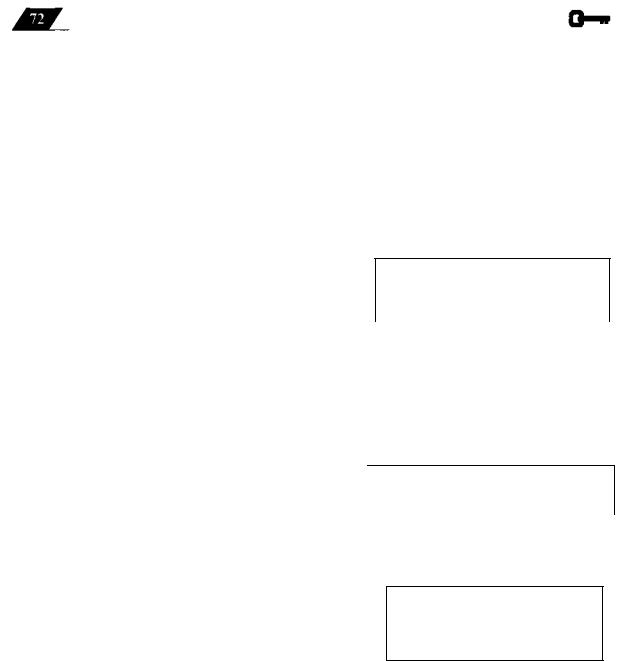
Writing Test Hints
EXPRESS CHANGES IN DATA EFFECTIVELY
IfWriting Task 1 is a graph, table or chart, you should notice first ifthe information is fixed in time or changes over time. Ifthe information changes over time, you need to express those changes by using words and phrases which describe how it has changed.
The figures given can either increase or decrease, fluctuate, or remain stable (stay the same). Increases, decreases and fluctuations can be expressed in either of two grammatical ways:
•verb + adverb form
•adjective + noun form.
•Look at the following table:
The number of (cars) |
increased |
|
suddenly |
|
|
|
jumped * |
|
rapidly |
|
|
|
rose |
|
• dramatically |
|
|
|
|
|
significantly |
|
|
|
decreased |
|
sharply A |
|
|
VERB + |
dropped |
|
steeply A |
|
|
ADVERB |
fell |
|
steadily * |
|
|
FORM |
|
|
gradually * |
|
|
|
fluctuated *A |
|
slowly * |
|
|
|
|
|
slightly |
|
|
|
|
|
|
|
|
|
|
|
|
|
|
|
|
|
|
|
|
There was a (very) |
sudden |
|
increase |
|
|
|
rapid |
|
jump * |
|
|
ADJECTIVE |
dramatic |
|
rise |
|
|
|
|
|
|||
significant |
|
|
|
|
|
+ NOUN |
sharp A |
|
decrease |
|
|
FORM . |
steep A |
|
drop |
|
|
|
steady * |
|
fall |
|
|
|
gradual * |
|
|
|
|
|
slow * |
|
fluctuation *A |
|
|
|
slight |
|
|
|
|
|
|
|
|
|
|
|
|
|
|
|
|
from (June) to (December).
between (June) and (December).
in the number |
from ... to |
.... |
of (cars) |
between... |
and.... |
* A Note that not all of the word combinations are possible: i.e, "slowjump" X
and "sharp fluctuation" X
•Look at the following examples from the model answer for Task 1 of Writing Test Four:
(i)Acme Sports Cars' monthly profit fell dramatically ...
(ii)Acme Sports Cars' monthly profit decreased slightly ... but rose sharply ...
(iii)The monthly profit of both Acme Sports Cars and Branson Motors gradually increased...
(iv)There was a three-fold increase in the latter's monthly profit...
Rewrite them using the alternative method to the one used above:
(i)
(ii)
(iii)
(iv)
(Answers are given upside-down at the bottom of page 61.)
59
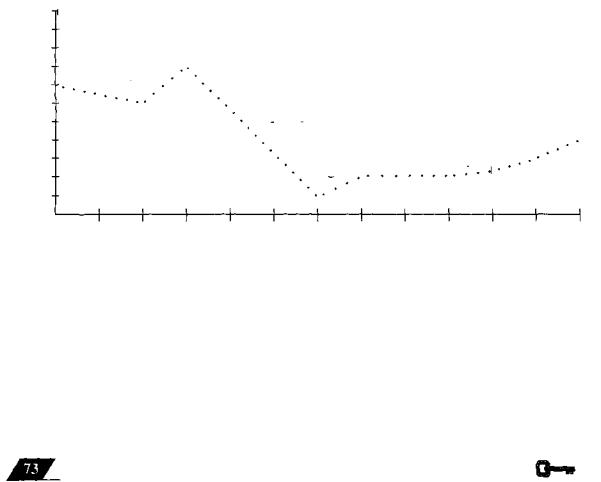
101 Helpful Hints for IELTS
Little or no change can be expressed in the following way:
The number |
|
remained |
|
|
steady |
|
|||
of (cars sold) |
|
|
|
|
stable |
||||
|
|
|
|
|
|
|
|||
|
|
|
stayed the same |
|
|
|
|||
|
|
|
|
|
|
|
|||
|
|
|
little |
|
|
change |
|||
There was |
|
|
|||||||
|
|
|
hardly any |
|
|
|
|
||
|
|
|
no |
|
|
|
|
||
from (June) to (December).
between (June) and (December).
in the number |
|
... ... .from to |
of (cars sold) |
between... and |
|
Notice how the words and phrases for expressing data changing with time apply to a graph:
O Look at the following graphical detail taken from Task 1 of Writing Test Four:
(for Acme Sports
Cars)
|
peak |
sharp rise |
|
steady drop |
dramatic fall / |
sharp drop |
(to) reach a plateau /
(to) remain steady
trough
(to) bottom out |
(to) reach the bottom |
gradual increase
The situation at the highest and lowest points of a graph can be expressed in the following way:
The monthly profit |
peaked |
|
|
|
in(December). |
|
|
|
|
||
The figures |
reached |
apeak |
|
at (20%). |
|
The situation |
|
a high (point) |
|||
|
|
||||
|
bottomed out |
|
|
|
|
|
|
|
|
|
|
|
reached |
rock |
|
bottom |
|
|
the |
|
|
||
|
|
|
|
|
|
|
|
a low (point) |
|
||
|
|
|
|
|
|
|
hit a trough |
|
|
|
|
|
|
|
|
|
|
USE THE CORRECT TENSE/VOICE
It is important to use the correct grammatical tense or voice each time you use a verb. If the Writing Task is a process or procedure, use the present tense and the passive voice to describe the steps or stages. You can also use the gerund form ofa verb (the "-ing" form used as a noun), and the infinitive with "to" construction after "it is necessary" and "it is important" etc.
O Look at the following examples from the model answer for Task 1 of Writing Test Two:
The second stage involves conducting suitable research.
Notes are taken from available literature at the library, and data (are) collected from
questionnaires...
Writing the first draft is the third stage.
First, it is necessary to organise the content ofthe essay, and (to) produce a briefoutline.
Use similar constructions with the present tense and the passive voice, the gerund form, and the infinitive with "to", when you are describing how something works.
60
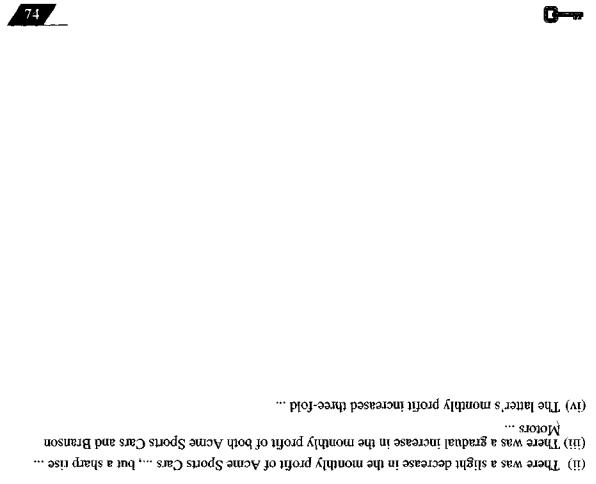
Writing Test Hints
When asked to describe information given in a table or chart that shows the present situation, use the present simple or present continuous tense, and the passive voice where necessary.
OLook at the following examples from the model answer for Task 1 of Writing Test Three:
... students from four European countries ... and one Middle Eastern country ... are taking Graphic Design...
Some students are enrolled in the Computer-Aided Design core option ...
... Sweden has the largest number of enrolled students (17) and Syria (has) the least (5).
When asked to describe information shown in a graph, table or chart that is either fixed in time or that changed over time, use the past simple or past continuous tense.
DLook at the following examples from the model answerforWriting Task 1 ofWriting Test Four: (Acme Sports Cars)... was making almost twice the profit at the beginning ...
There was a three-fold increase in the latter's monthly profit over the same period.
... Acme Sports Cars' monthly profit decreased slightly ... but rose sharply ...
Note that the use of the present perfect tense to convey the meaning of a past situation being considered (by the reader) in the present, e.g. "... Acme Sports Cars' monthly profit has fallen dramatically", can be confusing. It is better to make it a rule forWriting Task 1 to use the past simple or continuous tense for changes that took place during a completed period of time in the past.
It is also possible that the information in the graph, table or chart will refer to a period of time beginning in the past or present, and continuing into the future. In that case, you will need to use the correct language to express what may happen in the future. (See Speaking Hint 100.)
DO NOT ADD A "SEPARATE" CONCLUSION
There is no need to write a "separate" conclusion as you must do in Writing Task 2. This is because you are not being asked to conclude an argument, orevaluate your discussion ofa topic, as in Writing Task 2. Remember, your opinions are not required in Writing Task 1.
DLook at the last paragraph of the model answer for Writing Task 1 of Writing Test Two:
The sixth stage consists ofwriting the final draft of the essay. A spellcheck is required, before adding a title page and compiling a bibliography. The essay should then be submitted before the deadline for completion.
This last paragraph serves as a conclusion, since it is the sixth and final stage of the process.
Similarly, the last paragraph of all answers to Writing Task 1 will serve as a conclusion. However, if you are having trouble trying to write at least 150 words, it is be better to write a short conclusion than fail to complete the task. Try to do so by giving more detail, and not by giving opinions.
In Writing Task 1, your personal opinions about the topic are irrelevant
Turn the page upside down to see the answers to the exercise given on page 59:
61
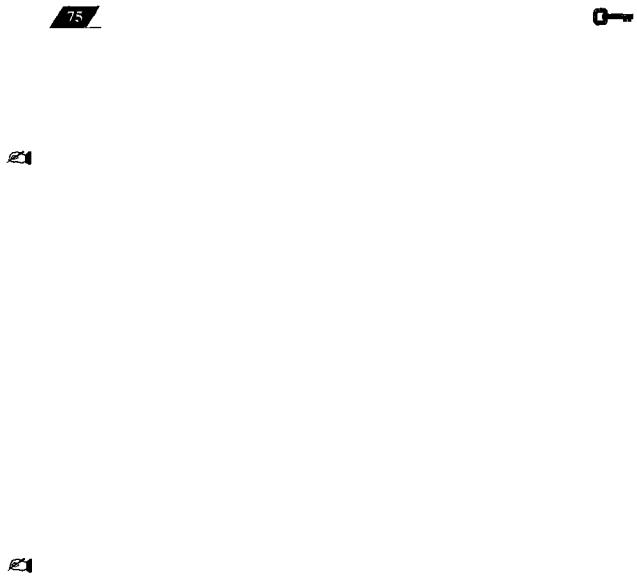
101 Helpful Hints for IELTS
SENTENCE CONSTRUCTION
USE A VARIETY OF SENTENCES TYPES
In both writing tasks it is important to avoid using repetitious sentence constructions. You need a variety ofways to express yourselfin your sentences. The best way to practise is to observe how other writers construct their sentences and imitate them.
There are 4 basic sentence types - simple, compound, complex and combination sentences.
a) Simple Sentences
• with 1 verb and a single subject:
Computers make life easy for many people.
• with 2 verbs and a single subject:
Computers cost a lot of money and require regular maintenance.
• with 2 verbs and a compound subject:
Businesses and individuals buy computers and use them mostly for correspondence.
The sentences above are simple - they consist of one independent clause. A clause is a group of words containing a subject and a verb. (A group of words without a subject and/or verb is merely a phrase.) An independent clause can function as a complete sentence, in which case it ends with a full stop.
b) Compound Sentences
Compound sentences consist of two or more independent clauses joined in the following ways:
• with a semi-colon:
Some people like computers; others are afraid of modern technology.
• with one of these 7 conjunctions: and - but - or - nor - for - so - yet (note the comma)
Students usually write with a computer, but / like writing by hand.
• with a conjunctive (joining) adverb: furthermore - moreover - therefore (etc.)
Students usually write with a computer; however, / like writing by hand.
The punctuation in each case is important and counts towards your final IELTS Writing Band Score.
62

Writing Test Hints
 c) Complex Sentences
c) Complex Sentences
Complex sentences consist of an independent clause and one (or more) dependent clauses. A dependent clause is a group of words including a verb which do not form a complete sentence by themselves, and so depend on the existence of an independent clause. There are 3 basic types of complex sentences:
• with a dependent clause functioning as an adverb: |
(beginning with an adverb) |
Although computers can save time, they take a long time to understand.
(A dependent adverb clause can come before or after the independent clause. The dependent adverb clause is followed by a comma only if it comes before the independent clause.)
• with a dependent clause functioning as an adjective: (beginning with a relative pronoun or relative adverb)
Database software is essential for companies which need to maintain records.
(A dependent adjective (relative) clause can begin with who, which, whose etc. (relative pronouns) or when, where and why (relative adverbs). The dependent clause adds information to a noun. A comma is required only if the information is not essential to the noun.)
• with a dependent clause functioning as a noun: |
(beginning with that, whether, or |
|
lwK question words etc.) |
Most experts insist that computers are essential in schools.
(A dependent noun clause~can function either as the subject or the object (as above) of the independent clause. A comma is, therefore, unnecessary.)
b) Combination Sentences
Combination sentences consist of a combination of compound and complex sentences. They therefore consist of at least two independent clauses and one or more dependent clauses:
When computers first appeared, they were huge, but now they are extremely compact.
Writing informative, varying and accurate sentences takes a great deal of skill and practice. You are advised to spend some time analysing the dependent and independent clauses in the sentences contained in the model answers for both writing tasks on pages 166-169. Also, we refer you to the publications under the heading 'Writing & Punctuation' in the Further Reading List on page 171, and our companion practice book '202 Useful Exercises for IELTS'.
6.1
